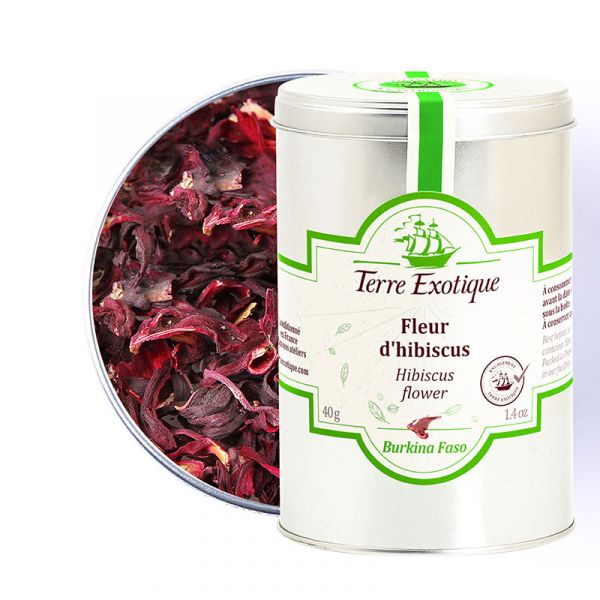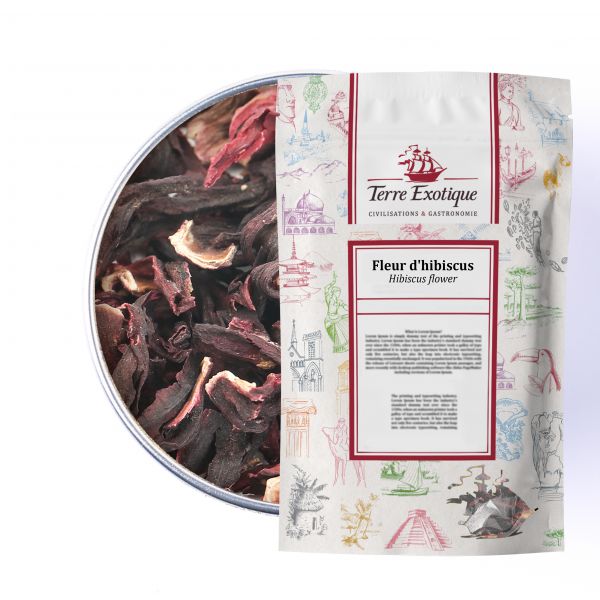





How to Use Hibiscus Flowers in Your Cooking?
Hibiscus flowers not only enhance our gardens but also our plates.
Some suggestions for using hibiscus flowers
Hibiscus flowers, with their delicate and sweet scents, make delicious hot or iced infusions, making them a perfect choice for refreshing and original beverages.
In fact, these flowers are the star ingredient in "bissap," a famous refreshing drink from Africa. Click here to discover our recipe.
Infused in sugar syrup or water, their vibrant red color can be used to color sauces, broths, rice pudding, and cocktails. Not only do their color and fragrance make them special, but their fruity and tangy taste also elegantly accentuates desserts, compotes, and even jams. They pair wonderfully with red fruits and chocolate.
Here are some recipe ideas for using hibiscus flowers:
- Hibiscus tea: Put 1 tablespoon of hibiscus flowers in a teapot and let it steep for 5 to 10 minutes;
- Strawberry Tiramisu: Infuse 1 tablespoon of hibiscus flowers in syrup, then soak your ladyfingers in the infusion;
- Hibiscus Strawberry Jam: Infuse 50g of hibiscus flowers in boiling water, then add the infusion to the other ingredients before cooking;
- Hibiscus Crème Brûlée: Infuse 2 teaspoons of hibiscus flowers in the cream before adding it to the beaten egg yolks.
Discover the Aromas of Hibiscus Flowers
Hibiscus flowers are a true gem with their vibrant color and refreshing aromas. They have a fruity and tangy aroma that brings life and zest to beverages, sauces, and desserts. Hibiscus flowers add vibrancy to your dishes!
Focus on the Botany of Hibiscus Flowers
How Do Hibiscus Flowers Grow?
The botanical name of hibiscus flowers, also known as "Guinea sorrel," is Hibiscus sabdariffa, and it belongs to the Malvaceae family. There are many different varieties of hibiscus, each with different growth requirements. This variety of hibiscus (Hibiscus sabdariffa) thrives in tropical regions and is mainly produced in Africa, Mexico, Asia, and the Caribbean.
Tracing the Origins of Hibiscus Flowers
Hibiscus Flowers and Their Origins
The origins of this variety of hibiscus remain uncertain and the subject of various hypotheses. However, its introduction to West Africa is dated back to the 20th century. It is widely used there, especially in preparing the famous bissap.
Benefits of Using Hibiscus Flowers
Hibiscus flowers are known for their benefits, particularly for intestinal health. They help support digestion and maintain optimal digestive comfort. Hibiscus flowers also contribute to improved vitality and are traditionally used to promote kidney health.
| Allergen | Absence |
|---|---|
| Native country | Egypte, Sénégal, Burkina Faso |
| Genus and botanical species | Hibiscus sabdariffa |
| Ingredients | karkade |
| Nutritional Info | VN Energie pour 100 g (energy for 100g) : 3.7 kJ / 0.87 kcal VN Matière grasse (fat) : 0.008 g Dont acide gras saturés (of which saturated fat) : 0 g VN Glucides (carbohydrate) : 0.2 g Dont sucres (of which sugars) : 0 g VN Protéines (protein) : 0g Vn Sel (salt) : 0 g |
| TRACES EVENTUELLES D'ALLERGÈNES | céleri, sésame, moutarde, fruits à coques. |
 Français
Français 